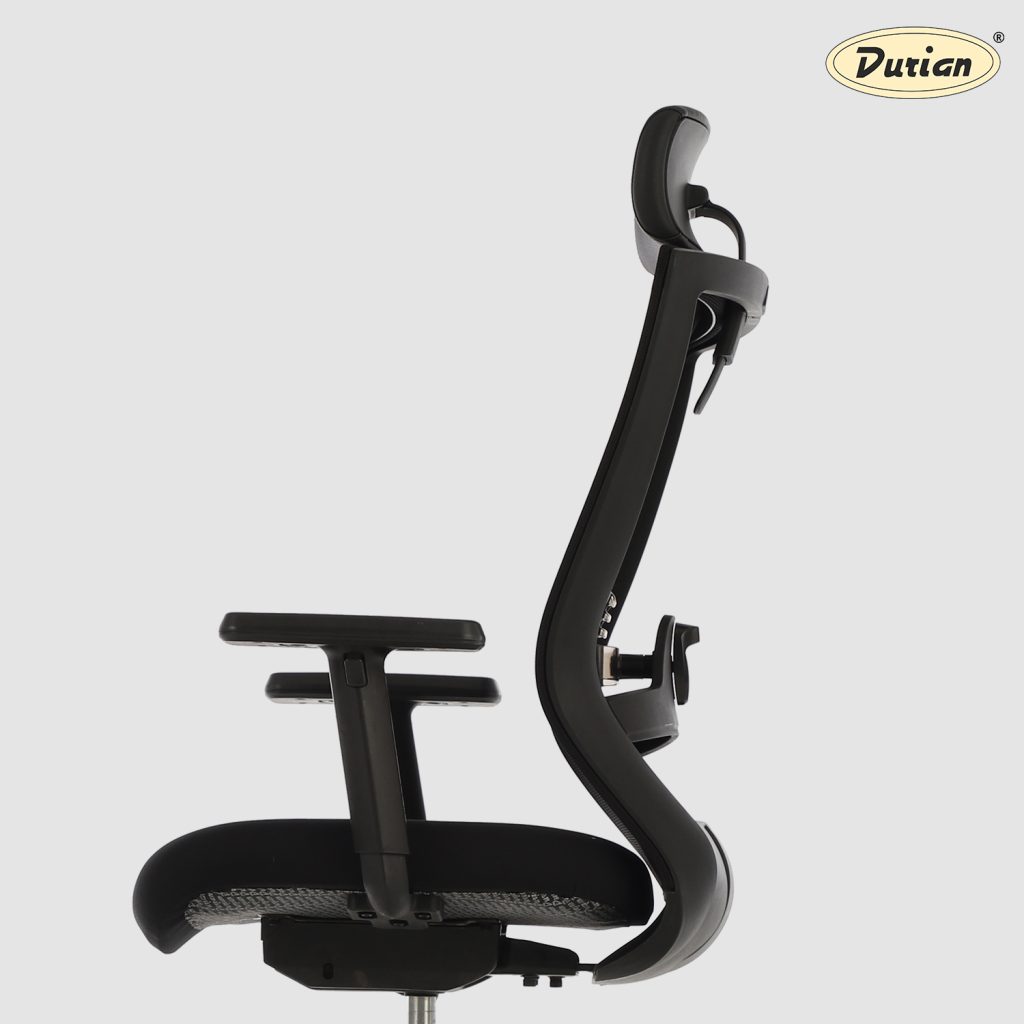In today’s fast-paced work environment, where many of us spend a significant amount of time sitting at desks, the importance of office chairs cannot be overstated. These specially designed chairs prioritize comfort, support, and overall well-being, significantly impacting our health, productivity, and job satisfaction. In this blog, we will explore the importance of ergonomic chairs in the workspace and the benefits they offer.

Posture and Spinal Health:
Sitting for extended periods can strain our spine and lead to poor posture. Ergonomically designed chairs provide proper support to maintain the natural curvature of the spine. Look for chairs with adjustable features like lumbar support, adjustable armrests, and height-adjustable seats. These features promote good posture, reduce the risk of back pain, and support spinal health.
Helps with Back Pain
One of the most common health issues linked to prolonged sitting is back pain, especially in the lower back. A well-designed ergonomic chair offers proper lumbar support that helps maintain the natural curve of your spine. This reduces strain on the muscles and ligaments that support your lower back, particularly when seated for extended periods. Chairs with adjustable height, tilt, and backrest options allow you to tailor the support to your unique posture, preventing slouching and encouraging a more upright, comfortable seating position. Over time, this can significantly alleviate chronic back pain and prevent it from worsening.
Reduces Neck Pain
Poorly designed chairs often lack support for the neck and shoulders, leading to stiffness, discomfort, and even tension headaches. A chair with a supportive headrest or high back can help reduce pressure on the neck by encouraging better posture. When your chair supports your upper back and allows your shoulders to remain relaxed, you’re less likely to hunch forward, which is a common cause of neck strain. This is particularly beneficial for those who spend long hours at a desk or computer. By investing in a chair that encourages proper alignment, you can minimise neck pain and improve your overall comfort.
Relieves Hip Pressure
Sitting on a hard or unsupportive surface for long periods can lead to discomfort and pressure around the hips. Ergonomic chairs are designed with contoured, cushioned seats that evenly distribute body weight and reduce the pressure on your hip joints. Features like waterfall seat edges also help by easing tension on the thighs and promoting better blood flow. Choosing a chair with the right depth and padding can make a noticeable difference in relieving hip discomfort and supporting your body more naturally throughout the day.
Improved Comfort:-
Sitting for long hours in uncomfortable chairs can lead to discomfort, fatigue, and decreased productivity. Ergonomic chairs prioritize comfort through features such as cushioned seats, breathable materials, and padded armrests. These chairs distribute body weight evenly, reducing pressure on specific areas and minimizing the risk of developing pressure ulcers or discomfort associated with extended periods of sitting.
Increased Productivity and Focus:
Ergonomic chairs positively impact productivity and focus in the workplace. By providing optimal support and comfort, these chairs minimize distractions caused by discomfort or pain. Employees can maintain a more attentive and engaged posture, leading to improved concentration and enhanced task performance. Increased comfort also reduces the need for frequent breaks, allowing for more sustained and focused work periods.
Enhanced Blood Circulation
Ergonomic chairs facilitate proper blood flow through features like adjustable seat height, seat tilt, and proper seat depth. These adjustments promote healthy circulation, reducing the risk of associated health issues and keeping employees healthier in the long run.
Employee Well-being and Job Satisfaction:
Investing in ergonomic chairs demonstrates a commitment to employee well-being, which can significantly impact job satisfaction. Providing a comfortable and supportive work environment improves morale and contributes to a positive organizational culture. Employees who feel valued and supported are more likely to be motivated, productive, and satisfied with their jobs, leading to reduced turnover rates and increased employee retention.
Be it a work-from-home setup or an office, investing in chairs that promote good posture, reduce discomfort, and enhance overall comfort can have a positive impact on your physical health and contribute to a happier, more productive lifestyle. So, take care of your health by giving thoughtful consideration to the chairs you sit in every day. Explore our wide collection of ergonomically designed office chairs that fuel your creativity with effortless comfort.












